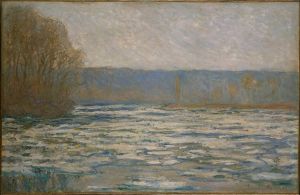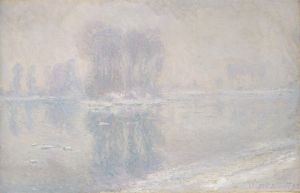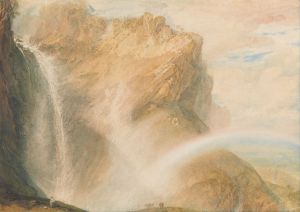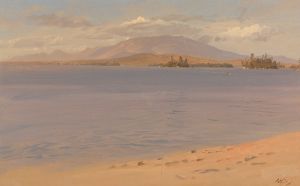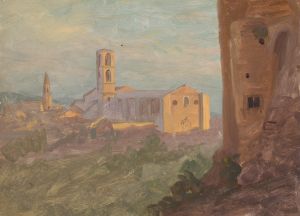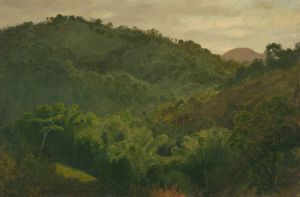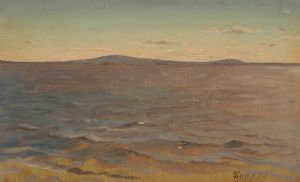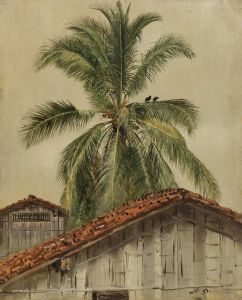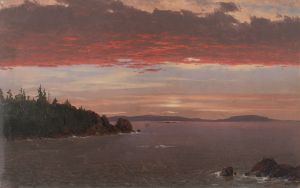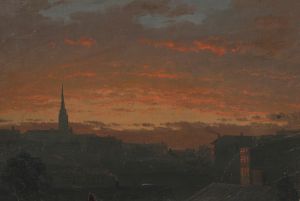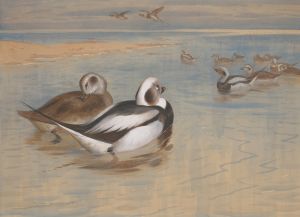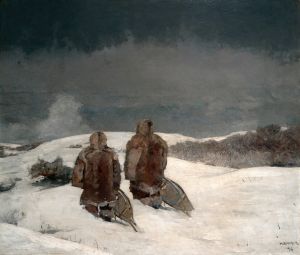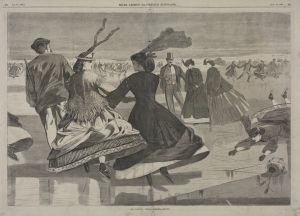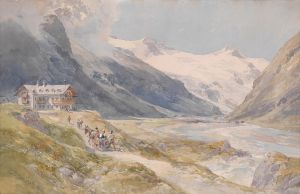
Icebergs
A hand-painted replica of Frederic Edwin Church’s masterpiece Icebergs, meticulously crafted by professional artists to capture the true essence of the original. Each piece is created with museum-quality canvas and rare mineral pigments, carefully painted by experienced artists with delicate brushstrokes and rich, layered colors to perfectly recreate the texture of the original artwork. Unlike machine-printed reproductions, this hand-painted version brings the painting to life, infused with the artist’s emotions and skill in every stroke. Whether for personal collection or home decoration, it instantly elevates the artistic atmosphere of any space.
"Icebergs" is a painting created by the American landscape artist Frederic Edwin Church in 1861. Church, a prominent figure of the Hudson River School, was known for his grand and detailed depictions of natural landscapes. This particular work is considered one of his masterpieces and reflects his fascination with the sublime beauty of the natural world.
The painting was inspired by Church's voyage to the North Atlantic in 1859. During this expedition, he traveled to Newfoundland and Labrador, where he observed and sketched icebergs firsthand. These studies served as the foundation for the large-scale painting, which captures the majestic and imposing presence of icebergs floating in a cold, serene sea. The work is notable for its meticulous attention to detail, dramatic lighting, and atmospheric effects, which convey both the grandeur and isolation of the Arctic environment.
"Icebergs" was originally exhibited under the title "The North" in 1861 at Goupil's Gallery in New York City. The exhibition was a significant event, as it coincided with the early months of the American Civil War. The painting drew large crowds and was praised for its technical brilliance and evocative power. Church later renamed the work "The Icebergs" to better reflect its subject matter.
The painting was purchased by a collector shortly after its exhibition but was later lost to public view for many years. In 1979, it resurfaced and was acquired by the Dallas Museum of Art, where it remains part of the museum's permanent collection. Today, "The Icebergs" is celebrated as a prime example of Church's ability to combine scientific observation with artistic imagination, creating a work that captures both the physical reality and emotional impact of the natural world.
Frederic Edwin Church's "The Icebergs" continues to be studied and admired for its technical precision, use of light and color, and its ability to evoke a sense of awe and wonder. It stands as a testament to the artist's skill and his dedication to portraying the beauty and power of nature.





